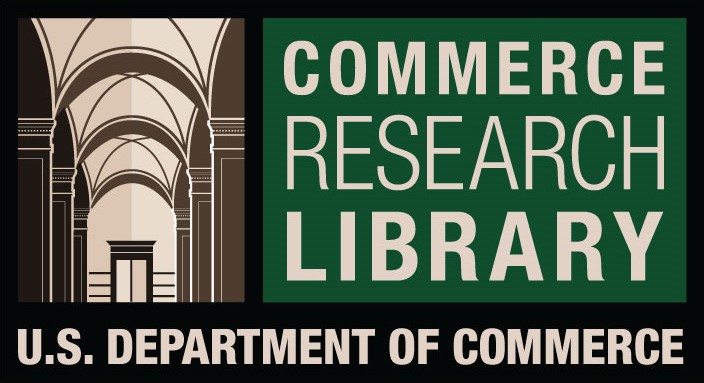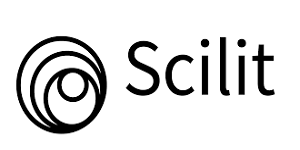The Optimal level of variation of Nike and Adidas Sporting Brands in Mashhad Sporting Stores
DOI:
https://doi.org/10.61841/rkkx3790Keywords:
sport brand variation, PSO algorithm, , brand share, seemingly unrelated equations systemAbstract
The product variation of every sporting brand plays an important role in the final choice of customers. This issue is important because the optimal level of variation of sporting brands can lead to decision-making in designing sporting product lines for managers. The data required for conducting this research collected from 140 sporting stores in Mashhad in 2019. In this research it has been tried to determine the optimal level of the
variation of the sporting brands using the seemingly unrelated system of equation and optimization algorithm of particle swarm. The results of the optimization algorithm of the particle swarm showed that based on the optimal level of brand variation and the findings of this study, overall Nike brand should reduce 5, 2, and 10 types of their sporting shoes in large, medium and small stores, respectively. Adidas brand also should remove 11, 5, and 4 types of its sporting shoes in large, medium and small stores of Mashhad market, respectively. Also, the finding of this study suggests that the reduction of the level of Nile variation in large and medium stores should be less than Adidas brand, and the reduction of Adidas brand must be more in large stores, which is reversed for small stores.
Downloads
References
[1] Alexouda, G., & Paparrizos, K. (2001). A genetic algorithm approach to the product line design problem
using the seller's return criterion: An extensive comparative computational study. European Journal of
Operational Research, 134(1), 165-178. doi: 10.1016/S0377-2217(00)00246-0
[2] Banks, A., Vincent, J., & Anyakoha, C. (2008). A review of particle swarm optimization. Part II:
hybridisation, combinatorial, multicriteria and constrained optimization, and indicative applications. Natural
Computing, 7(1), 109-124. doi: 10.1007/s11047-007-9050-z
[3] Balakrishnan, P., Gupta, R. & Jacob, V. (2004). Development of hybrid genetic algorithms for product line
designs. IEEE Transactions on Systems, Man, and Cybernetics, 34(1): 468−483. doi:
10.1109/TSMCB.2003.817051
[4] Bouchet, P., Hillairet, D., & Bodet, G. (2013). Sport brands. Routledge.
[5] Camm, J. D., Cochran, J. J., Curry, D. J. and Kannan, S. (2006). Conjoint optimization: An exact branch-andbound algorithm for the share-of-choice problem. Management Science, 52(3): 435−447. doi:
10.1287/mnsc.1050.0461
[6] Dadrasmoghadam, A., Ghorbani, M., Karbasi, A. R., & Kohansal, M. R. (2016). Determining the Optimum
Brands Diversity of Cheese Using PSO (Case Study: Mashhad). Industerial Engineering and Mangement
Systems, 15(4): 318-323. doi: 10.7232/iems.2016.15.4.318
[7] Dadrasmoghadam, A., Etezad, S.K., Sahebkaran, M.A., Barbaar, A., Ghorbani, M. (2020). Modeling the
Factors Affecting the Relative share of Sporting Brands in Mashhad Market. J Adv Pharm Edu Res, 10(S4):63-
69.
[8] Engelbrecht, A. P. (2007). Computational intelligence: An introduction. England: John Wiley and Sons.
[9] Foster, G. and Ferguson, S. (2013). August. Enhanced Targeted Initial Populations for Multi objective
Product Line Optimization. In ASME 2013 International Design Engineering Technical Conferences and
Computers and Information in Engineering Conference. American Society of Mechanical Engineers.
[10] Foster, G., Turner, C., Ferguson, S., & Donndelinger, J. (2014). Creating targeted initial populations for
genetic product searches in heterogeneous markets. Engineering Optimization, 46(12):1729-1747. doi:
10.1080/0305215X.2013.861458
[11] Goli, A., Zare, H. K., Tavakkoli-Moghaddam, R., & Sadeghieh, A. (2019). Hybrid artificial intelligence and
robust optimization for a multi-objective product portfolio problem Case study: The dairy products industry.
Computers & Industrial Engineering, 137, 106090.doi:10.1016/j.cie.2019.106090
[12] Green,W. H. (2002). Econometric analysis (5th ed).prentice Hall.
[13] Horrace, R.H., William, C., & Jeffrey, M.P. (2009). Variety: Consumer choice and optimal diversity. Food
Marketing Policy, Center Research Report, No. 115. doi: 10.22004/ag.econ.149942.
[14] Horrace, W. C., Huang, R., & Perloff, J. M. (2016). Effects of increased variety on demand, pricing, and
welfare. Research in Economics, 70(4): 569-587.doi:10.1016/j.rie.2016.06.006
[15] Guo, F., Qu, Q. X., Chen, P., Ding, Y., & Liu, W. L. (2016). Application of Evolutionary Neural Networks
on Optimization Design of Mobile Phone Based on User's Emotional Needs. Human Factors and Ergonomics in
Manufacturing & Service Industries, 26(3): 301-315. doi: 10.1002/hfm.20628
[16] Kohli, R. and Sukumar, R. (1990). Heuristics for product line design using conjointanalysis. Management
Science, 36(12): 1464−1478. doi:10.1287/mnsc.36.12.1464
[17] Kotler, Phillip, and Gary Armstrong. (2012). Principle of Marketing (ed). New Jersey.
[18] Newbery, M. (2008). Global Market Review of Active Sportswear and Athletic Footwear- Forecasts to 2014:
2008 Edition.
[19] Poli, R., Kennedy, J., & Blackwell, T. (2007). Particle swarm optimization. An overview. Swarm
Intelligence, 1(1): 33–57. doi: 10.1007/s11721-007-0002-0
[20] Shi, Y., & Eberhart, R. (1998). A modified particle swarm optimizer. Proceedings of the IEEE World
Congress on Computational Intelligence Anchorage, AK, USA: IEEE Press. 69−73. doi:
10.1109/ICEC.1998.699146
[21] Saridakis, C., Tsafarakis, S., Delias, P., Baltas, G., & Matsatsinis, N. (2015). Optimizing differentiation and
commonality levels among models in car line-ups: An empirical application of a nature-inspired heuristic
mechanism. Expert Systems with Applications, 42(5): 2323-2335. doi: 10.1016/j.eswa.2014.11.008
[22] Shang, J., Tian, Y., Liu, Y., & Liu, R. (2018). Production scheduling optimization method based on hybrid
particle swarm optimization algorithm. Journal of Intelligent & Fuzzy Systems, 34(2): 955-964. doi:
10.3233/JIFS-169389
[23] Shieh, M. D., Li, Y., & Yang, C. C. (2017). Product Form Design Model Based on Multiobjective
Optimization and Multicriteria Decision-Making. Mathematical Problems in Engineering.
doi:10.1155/2017/5187521
[24] Srinivasan, R. Lilien, G. L. and Rangaswamy, A. (2008). Survival of high tech firms: The effects of diversity
of product–market portfolios, patents, and trademarks. International Journal of Research in Marketing, 25(2):
119−128. doi: 10.1016/j.ijresmar.2007.12.005
[25] Tong, X., & Hawley, J. M. (2009). Measuring customer-based brand equity: empiricalevidence from the
sportswear market in China. Journal of Product & Brand Management, 18(4): 262-271. doi:
10.1108/10610420910972783
[26] Tsafarakis, S., Saridakis, C., Baltas, G., & Matsatsinis, N. (2013). Hybrid particle swarm optimization with
mutation for optimizing industrial product lines: An application to a mixed solution space considering both discrete and continuous design variables. Industrial Marketing Management, 42(4): 496-506. doi:
10.1016/j.indmarman.2013.03.002
[27] Wang, S.C. & Yeh, M.F. (2014). A modified particle swarm optimization for aggregate production planning.
Expert Systems with Applications, 41(6): 3069-3077. doi: 10.1016/j.eswa.2013.10.038
[28] Wu, S. & Chen, S. (2014). A Bi-level algorithm for product line design and pricing. In 2014 IEEE
International Conference on Industrial Engineering and Engineering Management (pp. 14-18). IEEE. doi:
10.1109/IEEM.2014.7058591
[29] Yee, W. F., & Sidek, Y. (2008). Influence of brand loyalty on consumer sportswear. International Journal of
Economics and Management, 2(2):221-236.
[30] Zellner, A. (1962). An efficient method of estimating seemingly unrelated regression and tests of regression
bias. Journal of American Statistical Association, 57(298): 348-368.
[31] Zhang, Z. J., Gong, L., Jin, Y., Xie, J., & Hao, J. (2017). A quantitative approach to design alternative
evaluation based on data-driven performance prediction. Advanced Engineering Informatics, 32: 52-65. doi:
10.1016/j.aei.2016.12.009
Downloads
Published
Issue
Section
License
You are free to:
- Share — copy and redistribute the material in any medium or format for any purpose, even commercially.
- Adapt — remix, transform, and build upon the material for any purpose, even commercially.
- The licensor cannot revoke these freedoms as long as you follow the license terms.
Under the following terms:
- Attribution — You must give appropriate credit , provide a link to the license, and indicate if changes were made . You may do so in any reasonable manner, but not in any way that suggests the licensor endorses you or your use.
- No additional restrictions — You may not apply legal terms or technological measures that legally restrict others from doing anything the license permits.
Notices:
You do not have to comply with the license for elements of the material in the public domain or where your use is permitted by an applicable exception or limitation .
No warranties are given. The license may not give you all of the permissions necessary for your intended use. For example, other rights such as publicity, privacy, or moral rights may limit how you use the material.












